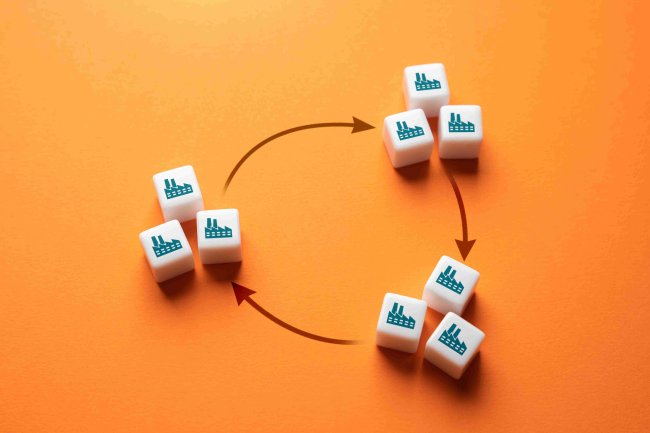The Power of Multi-Touch Attribution in Lead Lifecycle Management: Unlocking Marketing Success
Discover the significance of multi-touch attribution in optimizing lead lifecycle management. Learn how to enhance your marketing strategies and improve conversion rates with data-driven insights.

In today’s complex marketing landscape, understanding how various touchpoints influence lead conversion is paramount. Multi-touch attribution (MTA) provides the insights needed to evaluate the effectiveness of marketing efforts across the buyer's journey. By assigning credit to multiple interactions a lead has with your brand, MTA allows marketers to optimize their strategies, improve ROI, and enhance overall campaign performance.
Why Multi-Touch Attribution Matters
Traditional attribution models often focus solely on the first or last touchpoint, overlooking the myriad of interactions that occur before a lead converts. This oversimplification can lead to misguided marketing strategies, where valuable channels and touchpoints receive inadequate recognition. MTA solves this issue by providing a comprehensive view of the customer journey, ensuring that each interaction is valued appropriately.
Benefits of Multi-Touch Attribution
-
Holistic Insights: MTA provides a detailed understanding of how different channels work together to guide leads through the sales funnel. This perspective helps in recognizing which marketing activities contribute most to conversions.
-
Optimized Marketing Spend: By identifying high-performing channels, businesses can allocate resources more effectively, ensuring that marketing budgets are spent where they yield the highest returns.
-
Enhanced Lead Nurturing: Understanding the interactions that lead to conversions allows marketers to tailor their messaging and campaigns, ensuring that they resonate with potential customers at each stage of the journey.
Case Study: Transforming Lead Lifecycle Management
At a previous organization, I led a project where we implemented multi-touch attribution to enhance our lead lifecycle management process. We faced a common challenge: high lead volume but low conversion rates. By integrating an MTA model into our analytics framework, we could identify the most effective touchpoints throughout the customer journey.
For example, we discovered that our email campaigns, often seen as secondary in influence, played a critical role in re-engaging leads who had previously interacted with our content on social media. Armed with this insight, we adjusted our strategy to ensure that email follow-ups were timed strategically after social media interactions.
The result? A remarkable 30% increase in lead conversion rates within just three months. By recognizing the interconnectedness of our marketing channels, we were able to refine our approach and significantly enhance the efficiency of our lead lifecycle management.
Implementing Multi-Touch Attribution in Your Organization
To successfully adopt multi-touch attribution, consider the following steps:
-
Define Your Metrics: Establish the key performance indicators (KPIs) that matter most to your organization. This might include lead conversion rates, customer acquisition costs, and engagement metrics across channels.
-
Choose the Right Model: There are various MTA models to choose from, including linear, time decay, and position-based attribution. Select a model that aligns with your business goals and provides the insights you need.
-
Utilize the Right Tools: Implement analytics tools that support multi-touch attribution. Platforms like Marketo, HubSpot, and Google Analytics offer robust functionalities for tracking and analyzing touchpoints.
-
Analyze and Optimize: Regularly review your attribution data to identify trends and make informed decisions. Use these insights to optimize your marketing strategies continually.
-
Collaborate Across Teams: Ensure that sales, marketing, and customer service teams collaborate and share insights gained from MTA. This alignment can enhance the customer experience and improve overall business outcomes.
Conclusion
Mastering multi-touch attribution is pivotal in understanding and optimizing the buyer's journey. With the right tools and insights, you can transform your marketing strategies, as demonstrated by our case study. By embracing MTA, you empower your team to make data-driven decisions that enhance marketing effectiveness and lead conversion rates.
Join me on this journey of discovery, and let's unlock the full potential of multi-touch attribution together.
About Me
I am Raghav Chugh, a seasoned digital marketing and technology professional passionate about leveraging data to drive business success. With three Marketo Certified Expert (MCE) certifications and extensive experience in lead lifecycle design, marketing activities, and database management, I am well-equipped to guide you on your journey to mastering Marketo's Revenue Cycle Analytics.
Connect with me on LinkedIn for more insights into the world of digital marketing and technology.
About SMRTMR.com
At SMRTMR.com (Strategic Marketing Reach Through Marketing Robotics), we are dedicated to providing valuable information and resources to readers across the globe. Our articles, like this one, aim to empower individuals and businesses with the knowledge they need to succeed in the ever-evolving digital landscape.
Raghav Chugh, the founder of SMRTMR.com, brings his expertise in digital marketing and technology to each article. With a commitment to delivering high-quality, actionable content, SMRTMR.com has become a trusted source for professionals seeking to stay ahead in the world of digital marketing.
What's Your Reaction?




















